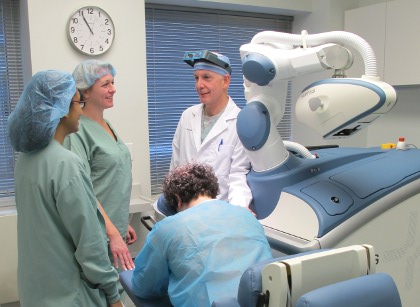Q: While I was lying awake last night your approach of making sites the day before implantation came to mind. It takes guts to have spearheaded that! I am not aware that that precedent has been set in hair transplant surgery. I would have been timid about infection; it’s a lot like closing a wound with a foreign body in it the next day. As with most things, I am a little slow to jump on board something new so I’m glad you’ve paved the way. Do you have any hesitance about this or do you have enough experience that you no longer hesitate? I would be concerned that variations of the local flora might make a difference and that, accordingly, a large sample size would be necessary to get comfortable. Glad for all of us that you are still blazing trails. — S.S., Shanghai, China
A: Thanks for your kind words. No hesitancy whatsoever. We find no increased risk. Think of it as if you did a hair transplant and ran out of grafts. The remaining sites don’t get infected, they just close up. In the process, all those chemotactic factors involved in the healing process move toward the wounds, so if a graft is placed into them, they would be less likely to get infected than a graft placed into a fresh (non-primed) wound, not more. It is like applying the surgical dressing Duoderm to a wound that helps it auto-sterilize. Putting the speculative science aside, we have not seen one single issue with it. Give it a try with an FUE or FUT procedure. Make the sites, have the patient takes his normal shower that night and you will be pleasantly surprised how little bleeding there is the next day and how easy it is to place the grafts.
Read a summary of the article on pre-making recipient sites
Read the full article as it was published in the Hair Transplant Forum International
Posted by





